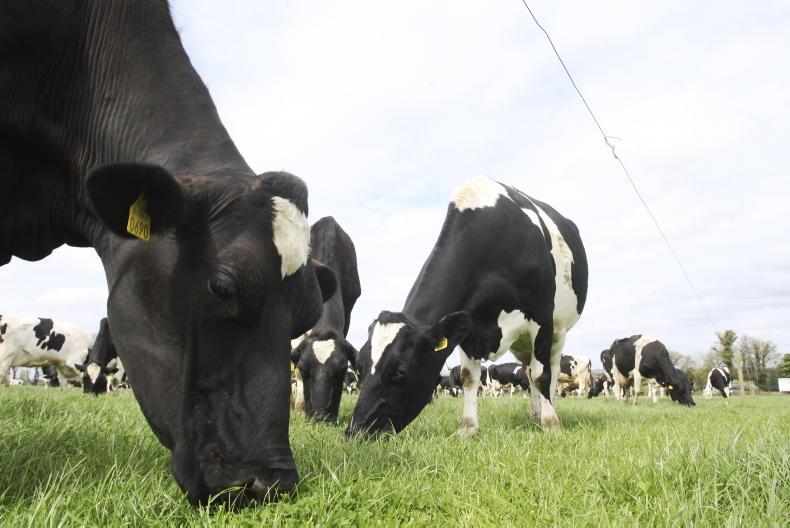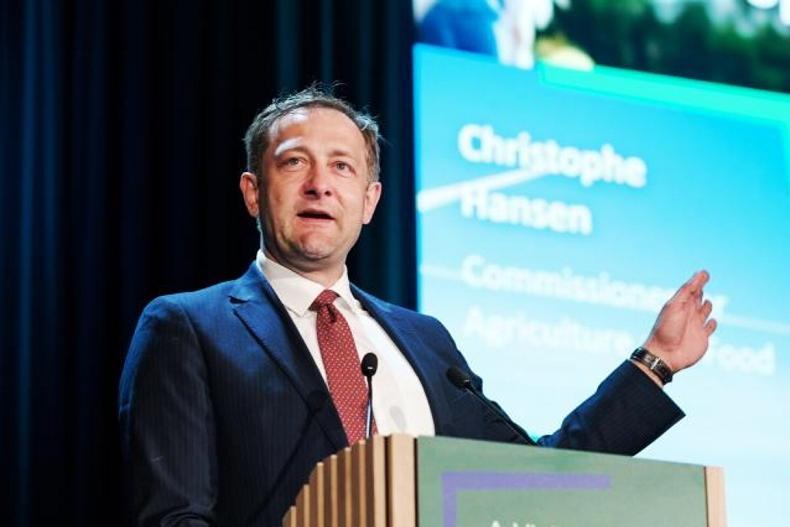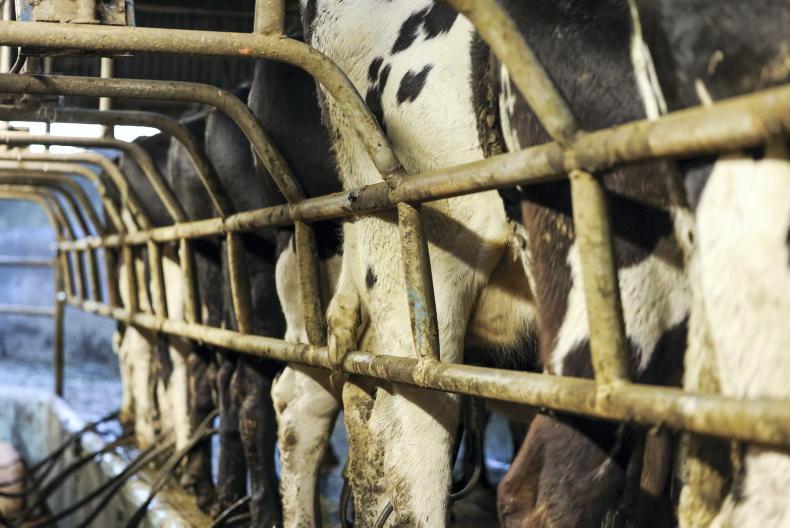In May 2020, an article was published in the Irish Farmers Journal discussing “the realities behind breakeven milk price”.
The article was based on “Drumlin Farm”, a model farm we have created using average data from farm businesses we work with across Northern Ireland (NI).
In the May 2020 article, Drumlin Farm had 95 cows yielding an average of 7,600l of milk, and costs of production at 27.54p/l.
NI dairy farmers have continued to manage their dairy herds and produce fresh food without furlough or working remotely options
The variable costs and the overheads on the farm reflected typical labour, machinery and finance commitments faced by local dairy farmers.
Almost a year and a half later, we decided to re-examine these figures – how has the pandemic affected our milk sector and how has the industry responded?
Despite all the uncertainty of the past year, NI dairy farmers have continued to manage their dairy herds and produce fresh food without furlough or working remotely options.
Across 2020-2021, milk price has averaged 30p/l, while our figures show breakeven price has been 28.4ppl.
Breakeven milk price is the figure a farm needs in order to maintain its current account/creditor balance from year to year while meeting its commitments, paying tax and drawing a wage from the business (reinvestment, sometimes shown as depreciation, is another aspect which should be considered in this figure).
However, the breakeven price for the last year is misleading since many businesses, including dairy farmers, partook of government self-employed income support scheme payments as well as drawing down bounce back loans.
These payments greatly assisted cashflow for many self-employed people. However, they are clearly one-off in nature, and many bounce-back loans have now commenced repayments.
Typical figures
Table 1 shows the finance breakdown for Drumlin Farm, using typical figures for local dairy herds.
As per the average farm, cow numbers have risen from 95 to 100, milk yield has improved and average stocking rate has increased.
Farmers are working harder to try to offset the rise in input costs. However, the increase in milk output has not been matched by an equivalent increase in farm labour.
Is this trend sustainable?
In the absence of extra labour or automation, the farm cannot increase indefinitely.
Excluding Basic Payment Scheme (BPS) payments worth £18,000 to this business, takes breakeven milk price to over 33p/l.
While the average milk price in 2020-2021 is slightly ahead of the breakeven price, if we adjust the input figures to reflect current prices (eg meal at £300/t) and extra debt repayment is introduced (eg for bounce bank loans), the breakeven milk price increases to 31p/l.
This figure does not include any reinvestment and is based on modest drawings from the business.
Excluding Basic Payment Scheme (BPS) payments worth £18,000 to this business, takes breakeven milk price to over 33p/l.
Rising costs
The farm figures shown reflect the situation that many local dairy businesses find themselves in.
It is clear that milk prices need to respond to the current realities on farms.
These farms have become more efficient and increased output through additional cows and improved yields. However, the extra output is struggling to keep up with the rising costs.
It is clear that milk prices need to respond to the current realities on farms.
Looking further ahead, statutory requirements around cross compliance and quality assurance, combined with future restrictions on expansion/additional buildings, will create a ceiling in terms of herd size for most producers.
In that scenario, farmers can no longer respond to tighter margins by increasing output, so either milk price has to go up, or costs go down, to avoid a cash deficit being a reality for the majority of local dairy farmers.
Cashflow
The other issue we often see on farms is how seasonality of production, the weather, and TB status are all factors that can stretch cashflow throughout the year in an already marginal enterprise where current account facilities are being increasingly challenged.
As highlighted in the article in 2020, increasing farm borrowing and/or extending creditor balances are not long-term solutions to a cash deficit, when the underlying economic regime for milk production remains unsustainable.
While the solution on farm includes improved efficiency, there must also be improved efficiency in the rest of the food chain and ultimately higher food prices to consumers, with this increased revenue passed back to producers.
Read more
Dairy management: dealing with high grass covers
Dairy Trends: GDT result underpins strong commodity markets
In May 2020, an article was published in the Irish Farmers Journal discussing “the realities behind breakeven milk price”.
The article was based on “Drumlin Farm”, a model farm we have created using average data from farm businesses we work with across Northern Ireland (NI).
In the May 2020 article, Drumlin Farm had 95 cows yielding an average of 7,600l of milk, and costs of production at 27.54p/l.
NI dairy farmers have continued to manage their dairy herds and produce fresh food without furlough or working remotely options
The variable costs and the overheads on the farm reflected typical labour, machinery and finance commitments faced by local dairy farmers.
Almost a year and a half later, we decided to re-examine these figures – how has the pandemic affected our milk sector and how has the industry responded?
Despite all the uncertainty of the past year, NI dairy farmers have continued to manage their dairy herds and produce fresh food without furlough or working remotely options.
Across 2020-2021, milk price has averaged 30p/l, while our figures show breakeven price has been 28.4ppl.
Breakeven milk price is the figure a farm needs in order to maintain its current account/creditor balance from year to year while meeting its commitments, paying tax and drawing a wage from the business (reinvestment, sometimes shown as depreciation, is another aspect which should be considered in this figure).
However, the breakeven price for the last year is misleading since many businesses, including dairy farmers, partook of government self-employed income support scheme payments as well as drawing down bounce back loans.
These payments greatly assisted cashflow for many self-employed people. However, they are clearly one-off in nature, and many bounce-back loans have now commenced repayments.
Typical figures
Table 1 shows the finance breakdown for Drumlin Farm, using typical figures for local dairy herds.
As per the average farm, cow numbers have risen from 95 to 100, milk yield has improved and average stocking rate has increased.
Farmers are working harder to try to offset the rise in input costs. However, the increase in milk output has not been matched by an equivalent increase in farm labour.
Is this trend sustainable?
In the absence of extra labour or automation, the farm cannot increase indefinitely.
Excluding Basic Payment Scheme (BPS) payments worth £18,000 to this business, takes breakeven milk price to over 33p/l.
While the average milk price in 2020-2021 is slightly ahead of the breakeven price, if we adjust the input figures to reflect current prices (eg meal at £300/t) and extra debt repayment is introduced (eg for bounce bank loans), the breakeven milk price increases to 31p/l.
This figure does not include any reinvestment and is based on modest drawings from the business.
Excluding Basic Payment Scheme (BPS) payments worth £18,000 to this business, takes breakeven milk price to over 33p/l.
Rising costs
The farm figures shown reflect the situation that many local dairy businesses find themselves in.
It is clear that milk prices need to respond to the current realities on farms.
These farms have become more efficient and increased output through additional cows and improved yields. However, the extra output is struggling to keep up with the rising costs.
It is clear that milk prices need to respond to the current realities on farms.
Looking further ahead, statutory requirements around cross compliance and quality assurance, combined with future restrictions on expansion/additional buildings, will create a ceiling in terms of herd size for most producers.
In that scenario, farmers can no longer respond to tighter margins by increasing output, so either milk price has to go up, or costs go down, to avoid a cash deficit being a reality for the majority of local dairy farmers.
Cashflow
The other issue we often see on farms is how seasonality of production, the weather, and TB status are all factors that can stretch cashflow throughout the year in an already marginal enterprise where current account facilities are being increasingly challenged.
As highlighted in the article in 2020, increasing farm borrowing and/or extending creditor balances are not long-term solutions to a cash deficit, when the underlying economic regime for milk production remains unsustainable.
While the solution on farm includes improved efficiency, there must also be improved efficiency in the rest of the food chain and ultimately higher food prices to consumers, with this increased revenue passed back to producers.
Read more
Dairy management: dealing with high grass covers
Dairy Trends: GDT result underpins strong commodity markets










SHARING OPTIONS